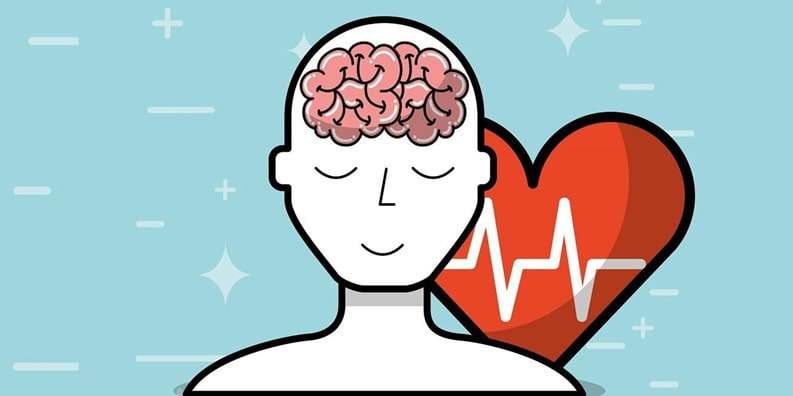
Understanding what the consumer wants is becoming the most important element for success in retail. Numerous consumer studies are being undertaken to get the elusive direction of what will or could sell. Amongst the most appreciated applications of marketing research in the current scenario is the science of neuromarketing. The importance of learning the cognitive aspects of decision-making by customers has been valued by many industries, one of those being the fashion e-retail. Leading international e-com giants like Amazon , Forever 21 , eBay and other e-com retailers are espousing advanced practices like heat-mapping based on brain waves and eye-tracking data in place of traditional surveys to retain emotional bond with diverse market segments they cater to.
A common rejoinder one hears from consumers is ‘I didn’t aim to buy this but I found it a pretty good deal’– this is a typical paradigm of how crucially customers’ decisions are driven by emotional reactions. Using these very emotional and often irrational behaviour of a customer, Neuroscience is introducing new ways to understand complex subconscious underlying aspects of buying behaviour. This is very important in today’s context as an increasing number of market research and social psychology studies have revealed that traditional surveys and self-reports are not reliable resources to predict consumer’s preferences; hence fashion retailers are jumping onto the bandwagon of advanced neuromarketing tools for creating innovative strategies and hitting the heart of their customers.
Indian apparel e-commerce brands too are actively embracing the novel technology in their marketing portfolios. Most of the research are being done through consulting companies and agencies such as Nielsen Consumer Neuroscience Research Centre , Kantar and Tobii Eye tracking , to name a few. Indian e-commerce websites like Myntra-Jabong have followed the footsteps of getting scientific with their upgraded marketing strategies.
Why is appreciating consumer’s emotional attributes necessary for a retailer?
Neuromarketing experts claim that our brain tries to avoid tasks that take more mental effort, also termed as the ‘law of least mental effort’. This is an offshoot of the fact that throughout our lives, we acquire a tendency to avoid physical exertion and pain that eventually gets imprinted in the subconscious and is reflected through decision-making in everyday life as well. Analogically, an excess of advertisements, payment glitch, product-list boom, causing web-clutter are all sources of mental exertion to the viewer acting like customer repellents.
Also Read : The rise of newer retail methods in new normal
This applies to the world of fashion e-commerce retailing too. As the competition continues to surge, customers are loaded with alternative websites to choose from, and they tend to opt for the one that causes least ‘friction’ or mental exertion to them. Moreover, anything that impedes the objective of a shopper visiting a website can cause ‘friction’ that causes similar emotional reactions as in a state of pain. It’s amazing to see how thorough market studies can provide a major impetus to web traffic for fashion e-retailers.
A website heatmap is one of the widely used consumer behaviour analytics techniques that is applied to the recorded eye-tracking/EEG data that helps a retailer identify how customers interact with their web pages and find out if they are lured towards important content. As a general inference, customers tend to look at the top left of a website at first and so a brand like Amazon proportions important information accordingly. An experiment by Lorna Crowley, Chief Marketing Officer of EyeQuant, a website auditing company, revealed improved customer attention by 11 per cent with a few simple changes as shown in the figure below.

Retail giants like Amazon and eBay and other fashion e-com retailers are increasingly investing on advanced market research tools. Recently, Forever 21 marked its first Artificially Intelligent visual search tool with enhanced navigation through the website that resolved the previous pinching-points for western shoppers accustomed to surfing through social media for trend discovery. Consumers would discontinue an e-commerce website if placing a successful order requires more than three clicks, says a research conducted by Donde. Thus, enabling a visual search option will aid in reducing the number of steps involved during checkout on the website of Forever 21.
A case of the e-retailer dominating the world of e-commerce retail with a website well-channelled with physical stores as well as application that has ‘anything and everything’ to offer, the fashion retail giant, Amazon realises the threat an encyclopaedic list of product categories, though overwhelming, might render with a choice overload on its valuable customers. Further, Amazon ensures its customers an effortless shopping by reducing number of clicks to one in its ‘Buy Now with one click’ feature.

Neuroscientists address the positive effect of music used correctly leading to an enhanced intuitional trust as ‘fluid processing’ in a customer’s brain. Fluid processing is remarked as a desirable mental disposition for the success of an advertisement. Researchers say that consistency is also equally significant: with correct implication it creates what is known as ‘sonic branding’, for instance, a strong celebrity endorsement in advertisements itself shapes a celebrity. In a similar halo, a good brand image can be created when consistent use of a piece of music coherently traverses a brand’s advertising.It is to be noted that advertisement has always been a large part of e-commerce business strategies, and recent research by Nielsen evokes the role of auditory links such as music and/or voice of a celebrity influencer, as crucial attention drivers in the appealing videos and images in the advertisement.
It’s a known fact that advertisements that use humans are more appealing than those which don’t. An even more remarkable insight is that ads that include emotion-catchy figures like babies or pets are even more successful focus drivers.
Although a brand’s niche specialisations such as its merchandise attributes, unique features, technicalities and facts may be hard to perceive, the emotional stimulations and personal experiences retain in the long-term memory which moulds viewers’ impression of the brand. This is why, fashion e-retailers need to keep an eye for innovative strategies to attract larger part of the audience and successfully trigger their cognitive decision driving factors.
Realising the importance of understanding the sub-conscious response of customers visiting their website, e-retailers including eBay , Flipkart , Myntra and Amazon have incorporated emotional marketing for an optimal web-design that reduces distractions and friction to optimise online web traffic and thus sales.
To sum up, for the success of an e-com retail business, focusing on results from a conventional market data source solely is risky enough to skip the bigger picture, capturing consumer’s long-term memories. In several experiments based on conventional data combined with neuroscientific tools, for example, heat mapping through EEG, fMRI and eye tracker data, is being espoused by e-retailers who used to rely solely on market survey responses that left us in the ambiguity of whether they would generate better results or not.
Adding implicit neuromarketing research provides such e-retailers with that specific validation in an unbiased way, with its major involvement in advertisement efficacy analysis with facial coding and webcam eye tracking that enables the stakeholders spanning from creative advertising team to the media buyers, to design richer as well as accurate promotional strategy.

Leave a Reply